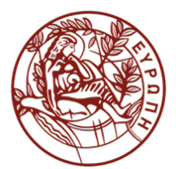Course description - Learning outcomes
Course description: To familiarize students with non-invasive techniques used today for the diagnosis of vascular diseases as well as for evaluating the results after a vascular surgery procedures and understand the role of the non-invasive vascular laboratory in the Hospital. Furthermore, students will comprehend the basic principles of hemodynamics during preoperative, intraoperative and postoperative surveillance of vascular surgery patients.
Learning outcomes:
Diagnostic tools
- Ultrasound: physical properties, Doppler phenomenon, ultrasound imaging, frequency wave analysis
- Plythesmography
- Transcutaneous oxygen tension
- Nuclear magnetic resonance
Clinical applications in the diagnosis of
- Cerbrovascular disease
- Peripheral arterial disease (lower and upper limbs)
- Splanchnic vascular lesions
- Venous disease
Basics in fluid mechanics
- Flow in a circular tube, flow types, pulsitle flow in elastic tubes
- Hemodynamic basis of atherosclerosis
- Hemodynamic behaviour of a atherosclerotic plaque
- Arterial aneurysms: Degenerative, post-stenotic, dissecting and false aneurysms
- Hemodynamics of arterial bypass grafts
- Grafts geometry, compliance hypothesis
Hemodynamics of venous diseases
Objectives: To familiarize students with non-invasive techniques used today for the diagnosis of vascular diseases as well as for evaluating the results after a vascular surgery procedures and understand the role of the non-invasive vascular laboratory in the Hospital. Furthermore, students will comprehend the basic principles of hemodynamics during preoperative, intraoperative and postoperative surveillance of vascular surgery patients.
Keywords: Plythesmography, Transcutaneous oxygen tension, Nuclear magnetic resonance, Arterial aneurysms,Hemodynamics of venous diseases.

